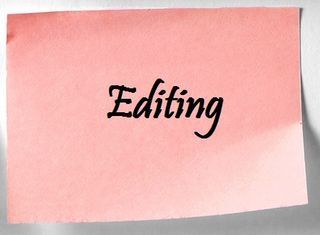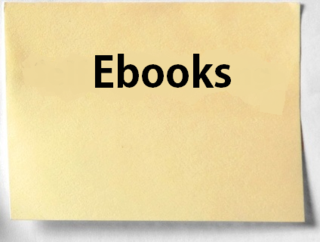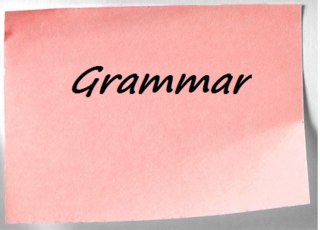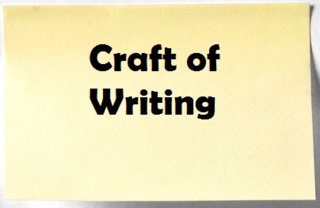Rob Bignell's Blog, page 335
May 10, 2014
How to self-edit and revise your fiction story
Rarely does  a writer create the perfect first draft. Usually several drafts are needed to get close to what the writer envisioned upon committing the story’s first word to paper or computer memory. Many writers find revising and self-editing difficult, however, largely because they’re unclear of what exactly needs to be changed to improve their story.
a writer create the perfect first draft. Usually several drafts are needed to get close to what the writer envisioned upon committing the story’s first word to paper or computer memory. Many writers find revising and self-editing difficult, however, largely because they’re unclear of what exactly needs to be changed to improve their story.
Following a basic pattern or checklist when revising can help guide a writer to craft the best work possible. This allows the writer to stay focused and resolve the most important problems with their manuscript before they address the lesser issues, if only for efficiency’s sake. When editing other people’s works as well as my own, I follow a simple rule: Focus on the story first…then add style…next proofread…and finally, format.
Let’s explore each of the components in that rule.
Focus on the story first
If you don’t have an interesting, well-constructed story to tell, typo-free, grammatically correct writing won’t make a difference. So begin by looking at:
g Character – Does the main character have a problem to solve, and more importantly, must that character make a difficult choice to resolve that problem?
g Plot – As the main character attempts to solve the problem, are there obstacles and setbacks, thrusts and counterthrusts, on the way to the story’s climax? Does the story become increasingly suspenseful?
g Point of view – Is the story told from the perspective that allows for the most suspense, and does the story stick to that one point of view?
…Then add style
Once the story is straightened out, think about improving the wording itself to maximize suspense, character development, and reader interest. Specifically consider:
g Diction – Are the right words selected, is the writing crisp, and do the sentences flow in a way that keeps the reader engrossed?
g Narrative drive – Does the writing show rather than tell and is information held back so that dramatic tension is maintained?
g Color – Are descriptive details concrete by appealing five senses and do you make use of imagery?
...Next proofread
There’s no need to proofread early draft to perfection as whole paragraphs and scenes will be rewritten. Doing so is like patching a tire, putting it back on, then taking it off to rotate it; it’s extra work and inefficient. Once you do proofread, look at the following:
g Spelling – Check all words you have the slightest doubt about and ensure that spellings are consistent, especially the characters’ names.
g Punctuation – Know the punctuation rules and apply them consistently.
g Capitalization – Learn the difference between proper and common nouns.
g Grammar – Dialogue doesn’t need to be grammatically correct, but the bulk of the narration should be with fragments used for effect rather than as a style.
…Finally, format
Formatting the manuscript before squaring away the story and cleaning up the text is like building a barn around the horse rather than building the barn and then putting the horse in it. Follow this order of operations when formatting, and as self-editing, recheck each point for consistency:
g Main text – Select the typeface, font size, spacing and alignment for the bulk of the text first.
g Headings – Next adjust the chapter headings and subheadings.
g Front and back matter – Then add the half-title page, title page, dedication, acknowledgements, table of contents (but not the page numbers), appendixes, index (again, not the page numbers), and author’s bio.
g Page numbers – Now that every iota of text is in the book, add the folios (page numbers and book title that typically appear at the top of each page)
g Table of contents/index – Lastly, add the page numbers to the table of contents and index if there is one.
Of course, most writers look at all of the elements listed here during each reading and revision. I’ll be the first admit that following these steps too strictly can be detrimental. After all, sometimes a powerful descriptive image pops into the head as reading a scene for plotting; you don’t want lose that image by not adding it to the manuscript simply because you’re not on that “step.” In addition, if you have a passage that definitely is going to remain, there’s probably no harm in proofreading it as thinking about how the next section might be rewritten. Still, as revising, ensure the focus of each draft follows the general pattern outlined above.
Need an editor? Having your book, business document or academic paper proofread or edited before submitting it can prove invaluable. In an economic climate where you face heavy competition, your writing needs a second eye to give you the edge. I can provide that second eye.
<A HREF="http://ws-na.amazon-adsystem.com/widg... Widgets</A>Related articles
 How do you know when your book is done?
How do you know when your book is done? Is your book ready to be self-published?
Is your book ready to be self-published? Avoid 'As you know' Syndrome in fiction
Avoid 'As you know' Syndrome in fiction
How self-edit and revise your fiction story
Rarely does  a writer create the perfect first draft. Usually several drafts are needed to get close to what the writer envisioned upon committing the story’s first word to paper or computer memory. Many writers find revising and self-editing difficult, however, largely because they’re unclear of what exactly needs to be changed to improve their story.
a writer create the perfect first draft. Usually several drafts are needed to get close to what the writer envisioned upon committing the story’s first word to paper or computer memory. Many writers find revising and self-editing difficult, however, largely because they’re unclear of what exactly needs to be changed to improve their story.
Following a basic pattern or checklist when revising can help guide a writer to craft the best work possible. This allows the writer to stay focused and resolve the most important problems with their manuscript before they address the lesser issues, if only for efficiency’s sake. When editing other people’s works as well as my own, I follow a simple rule: Focus on the story first…then add style…next proofread…and finally, format.
Let’s explore each of the components in that rule.
Focus on the story first
If you don’t have an interesting, well-constructed story to tell, typo-free, grammatically correct writing won’t make a difference. So begin by looking at:
g Character – Does the main character have a problem to solve, and more importantly, must that character make a difficult choice to resolve that problem?
g Plot – As the main character attempts to solve the problem, are there obstacles and setbacks, thrusts and counterthrusts, on the way to the story’s climax? Does the story become increasingly suspenseful?
g Point of view – Is the story told from the perspective that allows for the most suspense, and does the story stick to that one point of view?
…Then add style
Once the story is straightened out, think about improving the wording itself to maximize suspense, character development, and reader interest. Specifically consider:
g Diction – Are the right words selected, is the writing crisp, and do the sentences flow in a way that keeps the reader engrossed?
g Narrative drive – Does the writing show rather than tell and is information held back so that dramatic tension is maintained?
g Color – Are descriptive details concrete by appealing five senses and do you make use of imagery?
...Next proofread
There’s no need to proofread early draft to perfection as whole paragraphs and scenes will be rewritten. Doing so is like patching a tire, putting it back on, then taking it off to rotate it; it’s extra work and inefficient. Once you do proofread, look at the following:
g Spelling – Check all words you have the slightest doubt about and ensure that spellings are consistent, especially the characters’ names.
g Punctuation – Know the punctuation rules and apply them consistently.
g Capitalization – Learn the difference between proper and common nouns.
g Grammar – Dialogue doesn’t need to be grammatically correct, but the bulk of the narration should be with fragments used for effect rather than as a style.
…Finally, format
Formatting the manuscript before squaring away the story and cleaning up the text is like building a barn around the horse rather than building the barn and then putting the horse in it. Follow this order of operations when formatting, and as self-editing, recheck each point for consistency:
g Main text – Select the typeface, font size, spacing and alignment for the bulk of the text first.
g Headings – Next adjust the chapter headings and subheadings.
g Front and back matter – Then add the half-title page, title page, dedication, acknowledgements, table of contents (but not the page numbers), appendixes, index (again, not the page numbers), and author’s bio.
g Page numbers – Now that every iota of text is in the book, add the folios (page numbers and book title that typically appear at the top of each page)
g Table of contents/index – Lastly, add the page numbers to the table of contents and index if there is one.
Of course, most writers look at all of the elements listed here during each reading and revision. I’ll be the first admit that following these steps too strictly can be detrimental. After all, sometimes a powerful descriptive image pops into the head as reading a scene for plotting; you don’t want lose that image by not adding it to the manuscript simply because you’re not on that “step.” In addition, if you have a passage that definitely is going to remain, there’s probably no harm in proofreading it as thinking about how the next section might be rewritten. Still, as revising, ensure the focus of each draft follows the general pattern outlined above.
Need an editor? Having your book, business document or academic paper proofread or edited before submitting it can prove invaluable. In an economic climate where you face heavy competition, your writing needs a second eye to give you the edge. I can provide that second eye.
<A HREF="http://ws-na.amazon-adsystem.com/widg... Widgets</A>Related articles
 How do you know when your book is done?
How do you know when your book is done? Is your book ready to be self-published?
Is your book ready to be self-published? Avoid 'As you know' Syndrome in fiction
Avoid 'As you know' Syndrome in fiction
May 9, 2014
Utilize online storefronts to promote your book
One way  to promote your book is to sell it on as many different websites as possible. While most people interested in purchasing a book will go to Amazon.com, you need not limit yourself to that one website or “online storefront.” After all, sometimes buyers aren’t looking for a book at all but something related to your book’s topic. So as they troll the web seeking the perfect fly rod, why not let them stumble upon your guidebook to fishing rivers and streams?
to promote your book is to sell it on as many different websites as possible. While most people interested in purchasing a book will go to Amazon.com, you need not limit yourself to that one website or “online storefront.” After all, sometimes buyers aren’t looking for a book at all but something related to your book’s topic. So as they troll the web seeking the perfect fly rod, why not let them stumble upon your guidebook to fishing rivers and streams?
There are any number of online storefronts on which to promote and sell your book. Here are just a few:
n Self-publishing house websites – Your printer/publishing house (such as CreateSpace or Lulu.com) probably have a website for promoting your book. Don’t settle just for posting the book to it, though. Consider participating in any forums and or promotional opportunities.
n Readers’ websites – Places like Goodreads are excellent spots to promote your book. Those websites are where diehard readers definitely go to get ideas for their next book purchase. Not posting your book there would be like a sofa manufacturer not bothering to see its product in furniture stores.
n Topic-related sites – In addition to sending press releases to blogs and websites about topics covering your book, see if you can get added to their reading lists. Or consider advertising on it.
n eBay – Buy some copies of your book at cost, put them on sale at eBay for lower than what the book retails online but high enough to cover your expenses and to earn a little profit.
Of course, all of this requires some time and research. It probably won’t result in high enough sales to earn you much additional money. But your goal here is to get your name and book title out there so that the next volume you publish can reap higher rewards. Indeed, the more books you have published, the better these strategies will pay off.
Need an editor? Having your book, business document or academic paper proofread or edited before submitting it can prove invaluable. In an economic climate where you face heavy competition, your writing needs a second eye to give you the edge. I can provide that second eye.
<A HREF="http://ws-na.amazon-adsystem.com/widg... Widgets</A>Related articles
 Write a winning blurb for your book's back cover
Write a winning blurb for your book's back cover Why you want reviews written about your book
Why you want reviews written about your book Design a back cover that sells your book
Design a back cover that sells your book Do you need extra services a P.O.D. house offers?
Do you need extra services a P.O.D. house offers? Which social media is best to promote your book?
Which social media is best to promote your book?
May 8, 2014
Distribute ebook on variety of ereaders, tablets
Often when  clients get ready to format their manuscript into an ebook, they ask me which electronic book platform they should publish in. That’s sort of like asking, “Which bookstore should I sell my book in?” The answer to all is all of them!
clients get ready to format their manuscript into an ebook, they ask me which electronic book platform they should publish in. That’s sort of like asking, “Which bookstore should I sell my book in?” The answer to all is all of them!
Despite efforts by ebook publishers to go exclusively with them alone, you can self-publish your book on as many or as few ebook platforms as you wish. In going with multiple companies, however, you may be limited in which promotional programs you might participate in at each one.
At the beginning of 2014, there are several different places where you might publish and sell an ebook. Among the major players are:
g Kindle DP – The dominant force in the market, this division of Amazon.com distributes ebooks on Kindle ereaders and Kindle tablets.
g iBook – Apple is now No. 2 in the ebook market, it distributes ebooks via its various iPad tablets.
g Nook – Barnes and Noble sells ebooks for its Nook ereader and tablet.
g Kobo – The Canadian-based company distributes ebooks via its ereader, including through brick and mortar bookstores.
Google also distributes ebooks through its Android tablets. Microsoft and Sony also are in the game, though their percentage of the market is extremely small.
Although there are multiple companies distributing ebooks, the good news is that you can hit all of the major ones by just creating two ebooks documents that are then uploaded at two locations online: one for Kindle DP and one for Smashwords, who will will get your ebooks in the catalogs for iBook, Nook, Kobo and Sony Reader.
When distributing their ebooks among these various ereaders and tablets, writers have employed a variety of different strategies, and each yields varying degrees of success based on how many other titles the author has published, the ebook’s subject matter, other marketing efforts used during the release, and more. In short: What works for one writer may not work for another.
This much is certain, though: Most readers get their ebooks via Kindle. Kindle DP also offers a great way through its free promotions to get your book ranked high on Amazon.com best new releases lists. Given this, on average most self-published authors have fairly good success signing up for Kindle DP Select and then using the free promotion strategy to push sales of their already published books. This selling of older titles occurs because if readers like your free book, this increases the chances that they’ll actually purchase one or more of your other books.
After you’ve taken advantage of promotion opportunities on Kindle DP Select, have no new books to promote, and have created a little buzz about your latest title, then consider taking it off Kindle DP Select and then uploading it to Smashwords so you can sell the book on Nook, Kobo, iBook, etc. Of course, in this rapidly changing market, that strategy may soon be outdated. In particular, as Apple’s iPads gain more of a market share for ebook readership, getting an iBook at the same time that your Kindle ebook will become vital.
Need an editor? Having your book, business document or academic paper proofread or edited before submitting it can prove invaluable. In an economic climate where you face heavy competition, your writing needs a second eye to give you the edge. I can provide that second eye.
<A HREF="http://ws-na.amazon-adsystem.com/widg... Widgets</A>Related articles
 Getting started with formatting your ebook
Getting started with formatting your ebook Ebook readers continue to prefer Amazon.com; ereaders giving way to tablets, however
Ebook readers continue to prefer Amazon.com; ereaders giving way to tablets, however
May 7, 2014
Don’t slay your writing: Slew vs. slough
O! The  number of times I’ve seen writers misuse these two words!
number of times I’ve seen writers misuse these two words!
A slough is a slow moving stream, as in With no current to push them downstream, they easily waded across the slough. Sometimes, though, writers like to use slough when they mean to use slew.
Slew has two meanings. First, it’s the past tense of slay – to kill – as in During the epic journey, the warriors slew many opponents. Secondly (and here’s where the confusion comes in), it can mean many, as in A slough of UFO sightings have been reported in the county this past month.
Common sense would suggest that slough would mean many, as the metaphor of the stream seems to make more sense than using the past tense of slay. However, in this case English adopted from the Irish the word slue, which means crowd. Over time, the spelling of slue changed to slew.
And now many English language writers want to drown the guy who did that to the Irish word.
Need an editor? Having your book, business document or academic paper proofread or edited before submitting it can prove invaluable. In an economic climate where you face heavy competition, your writing needs a second eye to give you the edge. I can provide that second eye.
Related articles
 Five great quotations for aspiring writers
Five great quotations for aspiring writers Tighten writing by cutting begin fallacy
Tighten writing by cutting begin fallacy
May 6, 2014
How to make your writing more vivid
“If those  who have studied the art of writing are in accord on any one point, it is on this: the surest way to arouse and hold the attention of the reader is by being specific, definite and concrete. The greatest writers...are effective largely because they deal in particulars and report the details that matter.” – William Strunk, Jr., “The Elements of Style”
who have studied the art of writing are in accord on any one point, it is on this: the surest way to arouse and hold the attention of the reader is by being specific, definite and concrete. The greatest writers...are effective largely because they deal in particulars and report the details that matter.” – William Strunk, Jr., “The Elements of Style”
As a writer, you want your writing to be vivid. That demands giving those “specific, definite and concrete” details that makes writing come alive.
After all, consider this passage, which is flat and lacking in details:
The food looked delicious.
Now compare it to this rewritten passage, which is comparatively vivid:
Spying the braised roast, I found myself salivating.
Which one read better?
Writers can deliver vivid writing in a number of ways:
>>Show don’t tell – Rather than tell readers what a character feels, infer it through description. For example, don’t write Adam turned angry but instead say Adam’s hands balled into fists.
>>Use active voice verbs – Let verbs do the heavy lifting for your sentence. Carol was frightened is a weak sentence because was is a weak, passive voice verb. Instead use an active voice verb that shows her fright, such as Carol shivered.
>>Appeal to reader’s senses – Instead of abstractly labeling a character’s emotional state, show it through sound, smell, sight, touch or taste. Don’t say Ben was disagreeable but Ben snarled at the suggestion; now the reader can “hear” Ben’s unpleasantness.
>>Select the absolutely right word – Often dull sentences contain inexact and overused words. For example, rather than say More studying will improve your grades write More studying will boost your grades.
Look back at one of your writings that you’ve considered to be lackluster. Examine it for exposition, passive voice verbs, appeals to the five senses, and word choice. Can you revise the paragraph so that it’s more vivid?
Need an editor? Having your book, business document or academic paper proofread or edited before submitting it can prove invaluable. In an economic climate where you face heavy competition, your writing needs a second eye to give you the edge. I can provide that second eye.
Related articles
 Create successful story by staging it
Create successful story by staging it Strengthen writing by replacing adverbs
Strengthen writing by replacing adverbs Treat readers to vivid passages in your story
Treat readers to vivid passages in your story
May 5, 2014
Editing client publishes first children’s book
An editing  client of mine has released her first children’s book! Stephanie M. Ward’s “Wally, the Warm-Weather Penguin,” tells the tale of an Emperor Penguin from Antarctica who isn't exactly like the other penguins. Wally is always cold. So, he takes a journey to the Galapagos Islands in search of warm weather and discovers an amazing world of tap-dancing crabs, racing hundred-year-old tortoises, and diving birds with bright blue feet. Wally the Warm-Weather Penguin is a delightful rhyming board book for children aged 1–4 (Though my 7 year-old loved it, too!). The book can be purchased online.
client of mine has released her first children’s book! Stephanie M. Ward’s “Wally, the Warm-Weather Penguin,” tells the tale of an Emperor Penguin from Antarctica who isn't exactly like the other penguins. Wally is always cold. So, he takes a journey to the Galapagos Islands in search of warm weather and discovers an amazing world of tap-dancing crabs, racing hundred-year-old tortoises, and diving birds with bright blue feet. Wally the Warm-Weather Penguin is a delightful rhyming board book for children aged 1–4 (Though my 7 year-old loved it, too!). The book can be purchased online.
Need an editor? Having your book, business document or academic paper proofread or edited before submitting it can prove invaluable. In an economic climate where you face heavy competition, your writing needs a second eye to give you the edge. I can provide that second eye.
<A HREF="http://ws-na.amazon-adsystem.com/widg... Widgets</A>Related articles
 Editing client, Ed Wyns, publishes first novel
Editing client, Ed Wyns, publishes first novel Editing client releases quest novel sequel
Editing client releases quest novel sequel Consider using man vs. nature conflict in your story
Consider using man vs. nature conflict in your story How to get rid of Word's proofreading marks
How to get rid of Word's proofreading marks
May 4, 2014
Five Great Quotations about Story Inspirations
“Thus, in  a real sense, I am constantly writing autobiography, but I have to turn it into fiction in order to give it credibility.” –Katherine Paterson
a real sense, I am constantly writing autobiography, but I have to turn it into fiction in order to give it credibility.” –Katherine Paterson
“I would hurl words into this darkness and wait for an echo, and if an echo sounded, no matter how faintly, I would send other words to tell, to march, to fight, to create a sense of hunger for life that gnaws in us all.” – Richard Wright
“You never have to change anything you got up in the middle of the night to write.” – Saul Bellow
“To be a writer is to sit down at one's desk in the chill portion of every day, and to write; not waiting for the little jet of the blue flame of genius to start from the breastbone - just plain going at it, in pain and delight.” – John Hersey
“To write fiction, one needs a whole series of inspirations about people in an actual environment, and then a whole lot of work on the basis of those inspirations.” – Aldous Huxley
Need an editor? Having your book, business document or academic paper proofread or edited before submitting it can prove invaluable. In an economic climate where you face heavy competition, your writing needs a second eye to give you the edge. I can provide that second eye.
<A HREF="http://ws-na.amazon-adsystem.com/widg... Widgets</A>Related articles
 Get it right every time: All ways vs. always
Get it right every time: All ways vs. always How to create page breaks in your ebook
How to create page breaks in your ebook Why bookstores don't carry self-published books
Why bookstores don't carry self-published books Market titles by placing free books around town
Market titles by placing free books around town Five great quotations about book critics
Five great quotations about book critics
May 3, 2014
Editing client releases breast cancer book
A recent  editing client of mine has released his first book, in which he chronicles how he and his 30-year-old wife struggled with her diagnosis of an aggressive form of breast cancer. Ben DuMont’s “A Pathway to Peace” describes him taking on a challenging new role as a husband and as a father to two toddlers – and of grappling with his own doubts and fears, he experiences a spiritual transformation that compels him to do something beyond simply supporting and caring for his family. DuMont was honored as the 2013 Susan G. Komen National Co-Survivor of the Year. “A Pathway to Peace” is available for purchase online.
editing client of mine has released his first book, in which he chronicles how he and his 30-year-old wife struggled with her diagnosis of an aggressive form of breast cancer. Ben DuMont’s “A Pathway to Peace” describes him taking on a challenging new role as a husband and as a father to two toddlers – and of grappling with his own doubts and fears, he experiences a spiritual transformation that compels him to do something beyond simply supporting and caring for his family. DuMont was honored as the 2013 Susan G. Komen National Co-Survivor of the Year. “A Pathway to Peace” is available for purchase online.
Need an editor? Having your book, business document or academic paper proofread or edited before submitting it can prove invaluable. In an economic climate where you face heavy competition, your writing needs a second eye to give you the edge. I can provide that second eye.
<A HREF="http://ws-na.amazon-adsystem.com/widg... Widgets</A>Related articles
 Komen's 2012-2013 Co-Survivor of the Year: St. Louisan Ben DuMont
Komen's 2012-2013 Co-Survivor of the Year: St. Louisan Ben DuMont Editing client, Ed Wyns, publishes first novel
Editing client, Ed Wyns, publishes first novel Editing client releases quest novel sequel
Editing client releases quest novel sequel
May 2, 2014
Draw attention to book via article directories
One good  way to draw attention to your book is by writing an article related to it, then getting it published. Fortunately, you don’t have to play the freelancer game to get the article published as you can post it for free at online article directories, such as Ezine and GoArticles.
way to draw attention to your book is by writing an article related to it, then getting it published. Fortunately, you don’t have to play the freelancer game to get the article published as you can post it for free at online article directories, such as Ezine and GoArticles.
The challenge then is to come up with an article idea that is about 500-600 words long that would interest people in your book. If you write is nonfiction, that’s easy, as you can pull excerpts from it and pen a couple of lead paragraphs around it. For example, my hiking guidebook about Lake Superior easily could generate an article about “Five Must-See Lake Superior Lighthouses.”
If you’ve written a novel or book of poetry, article topics require a little more creativity and probably are less directly related to your book. Some possible article topics include the literary impact of an author who has inspired your writing, the quirky history of where your book is set, or a topic vital to your book’ plot (If you wrote a science fiction book involving time travel, an article might be “Will time travel ever be possible?”). Of course, you’ll want to sneak in a mention of your book, using it to establish your credentials for writing such an article.
Article directories do not carry the same weight on search engines as they once did thanks to changes in Google’s algorithm updates; in fact, they actually hurt your website’s rankings, so you want to avoid placing a link in your article to your site. Still, article directories do create another page and hence another entry point for readers to discover your book.
Need an editor? Having your book, business document or academic paper proofread or edited before submitting it can prove invaluable. In an economic climate where you face heavy competition, your writing needs a second eye to give you the edge. I can provide that second eye.
<A HREF="http://ws-na.amazon-adsystem.com/widg... Widgets</A>Related articles
 Which social media is best to promote your book?
Which social media is best to promote your book? '7 Minutes a Day' now available in paperback!
'7 Minutes a Day' now available in paperback!



